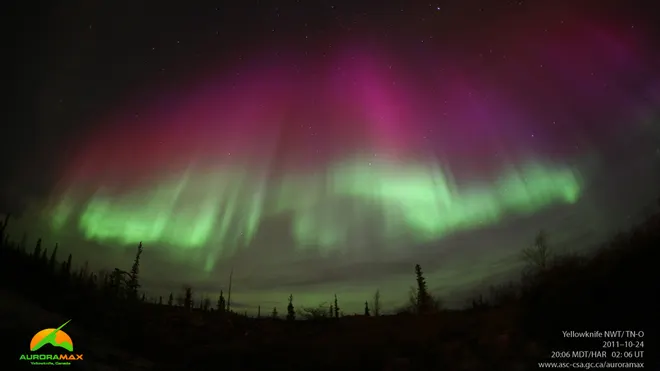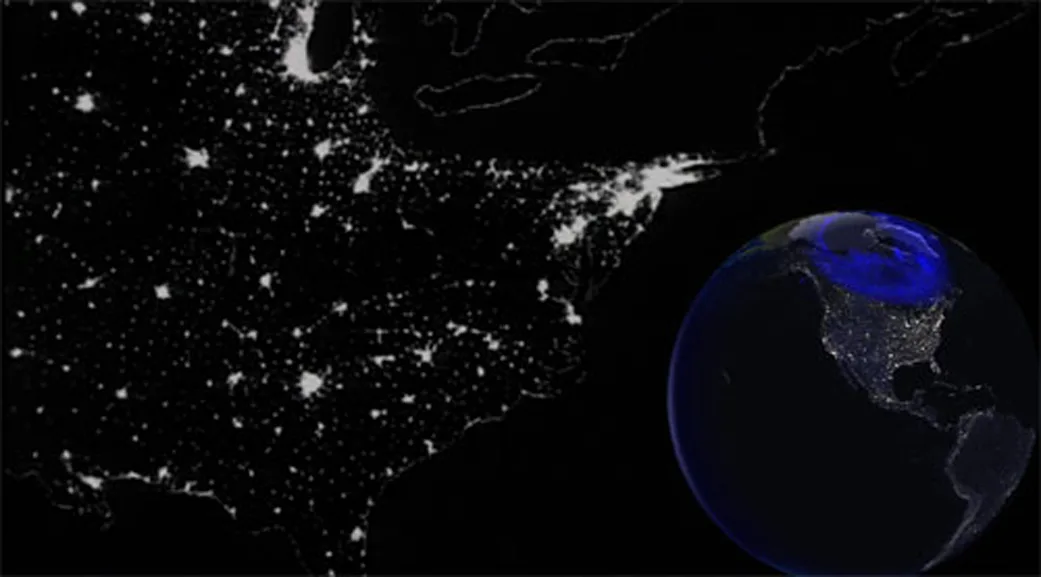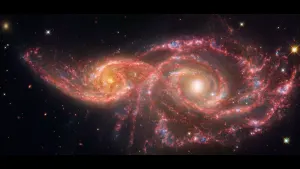
Blackout-causing 'super' solar storms happen more often than we thought
A new study highlights the risks to our technologies and power grids due to intense space weather
Powerful solar storms pose a great danger to our technologies here on Earth, and space weather scientists just determined that we see these storms far more often than we thought, possibly up to once every 25 years.
In September of 1859, while observing sunspots with his telescope, astronomer Richard Carrington witnessed what is still considered to be the most powerful solar flare ever seen. Less than a day later, the event was followed by intense auroral displays that were visible all the way to the equator. Long distance telegraph lines became so charged with electricity that operators suffered shocks, and for days after they could even send messages without hooking the system up to a power source. In the aftermath, Carrington linked the events, effectively discovering 'space weather' for the very first time.
Decades later, in July of 2012, satellites observing the Sun spotted an immense cloud of plasma — a coronal mass ejection — erupting into space. Detailed computer modelling revealed that if this rapidly expanding cloud had erupted just nine days earlier, it would have scored a direct hit on Earth, causing another "Carrington-level" solar storm.

Two different solar storms from July 2012 are depicted in this simulation. The one on the left, which erupted from the Sun on July 12, produced a G3 (major) geomagnetic storm when it passed Earth on July 14. The one on the right, which erupted on July 23, following three smaller CMEs from July 17-19, reached Earth's orbit in less than a day and would likely have caused widespread power outages around the world. (NASA's Scientific Visualization Studio, the Space Weather Research Center (SWRC), the Community-Coordinated Modeling Center (CCMC), Enlil and Dusan Odstrcil (GMU), Leila Mays (CUA) and Janet Luhmann (UCB) and NASA's Scientific Visualization Studio.)
UK-based insurance company Lloyd's of London released a study the following year, examining the effects of a Carrington-level event on our modern infrastructure. The conclusion stated that if Earth had taken a direct hit from the 2012 solar storm, it would have caused world-wide blackouts and satellite failures.
The total price tag just to the U.S. economy was up to 3 trillion dollars. It would have been even more costly to the global economy. Even now, nearly eight years after the event, it is possible some parts of the world would have still been trying to recover.
These two events are excellent examples of just how dangerous space weather can be. A new study performed by scientists with the University of Warwick and the British Antarctic Survey now shows that solar storms severe enough to impact our technologies can occur as often as once every 25 years.
"Our research shows that a super-storm can happen more often than we thought," Richard Horne, a space weather researcher at the British Antarctic Survey who co-authored the paper, said in an American Geophysical Union blog post. "Don't be misled by the stats. It can happen any time. We simply don't know when, and right now we can't predict when."
Watch below: NASA - The Difference Between CMEs and Solar Flares
Space Weather
Our Sun is an active star. It constantly emits a stream of charged solar particles into space that we call the solar wind. Meanwhile, every 11 years, the Sun goes through a cycle of increasing and decreasing number of sunspots. The more sunspots there are, the greater the chances we'll see intense solar flares, and eruptions of immense clouds of magnetized plasma that are often called 'solar storms'.
We on Earth are largely protected from all of this activity due to our planet's atmosphere and geomagnetic field. An invisible field that is produced by the molten metal core, Earth's geomagnetic field causes most of the charged particles from the solar wind and solar storms to flow around the planet. Some particles that do make it down into our atmosphere produce the auroras — the Northern and Southern Lights — as they smack into air molecules, causing them to emit light.

Auroras captured by an all-sky camera in Yellowknife, NWT. (Canadian Space Agency)
While auroras are beautiful, there is a dark side to all of this.
The same conditions that produce auroras cause disruptions to Earth's geomagnetic field. As the magnetic field fluctuates during these disruptions, it can set up electric currents through the ground that interfere with transmission lines and power grids.
An excellent example of this is the March 13, 1989 Quebec Blackout, which resulted from a powerful geomagnetic storm caused by a solar storm that erupted just three days before. NASA called it "the day the Sun brought darkness."
The blackout lasted for 9 hours, and there were reportedly power grid problems that sprang up across the rest of North America, as well as northern Europe. There were even impacts on satellites, and the Space Shuttle Discovery, which was in space to deliver a new communication satellite into orbit.

This map shows an artist's impression of the extent of the auroras seen on the night of March 12, 1989, and the extent of the resulting blackout over Quebec and surrounding areas, all caused by a geomagnetic storm. (NASA)
The denser, hotter and faster a solar storm is, the more severe the impacts will be here on Earth — auroras become brighter and visible farther away from the poles, and the greater the disruption will be to Earth's geomagnetic field. The exact results of this depend on specific combination of density, energy and speed, but also on the strength and direction of the magnetic field carried by the solar storm. Thus, we do not always see the same impacts from the same level of solar storm, and they do not always result in blackouts and the like.
The advancing and spreading of technologies across the planet also has an effect on the impacts of any particular solar storm.
150 years ago, during the Carrington Event, the most advanced technology at the time was the telegraph network, and it suffered severe and bizarre impacts. Today, there is far more technology spread around the world, and we are far more dependent on it, which potentially makes us more vulnerable to the impacts of solar storms.
Watch below: Comparing CMEs — Moderate 2006 event vs Carrington Event of 1859
Since the Carrington Event
According to University of Warwick space weather researcher Sarah Chapman and her colleagues, severe solar storms, which produce intense auroras and are capable of causing minor disruptions to satellites and power grids, happen about once every three and a half years, on average. That translates to about a 28% chance of one occurring during any particular year.
'Great' solar storms are strong enough to cause localized blackouts here on Earth, like in Quebec in 1989. These have about a 4 per cent chance of happening per year, thus occurring roughly every 25 years.
Carrington-level storms — the ones that can result in global blackouts — are extremely rare, fortunately. Based on this study, there's only a 0.7 per cent chance per year of one occurring, or about once every 142 years.
Space weather scientists keep track of the impacts of solar storms using what is known as the disturbance storm time index or Dst. Dst gives them an accurate, direct way to measure the severity of a solar storm, by reading how strongly Earth's geomagnetic field reacts to it. The use of this index only goes back to the late 1950s, however, recording data from the five most recent solar cycles.
To get a better idea of the risks posed by space weather events, however, we should look as far back in time as possible - to as far back as the discovery of space weather, if we can.
To do this, Chapman, along with Horne and fellow University of Warwick space weather scientist Nick Watkins, found a new way to relate the Dst index to another space weather index that has been in use since 1868. The aa index, as it is called, simply tracks the number of times when Earth's magnetic field experienced a significant disruption due to the effects of space weather.
By relating the two indices during the years they overlap, the researchers were able to expand Dst all the way back to the mid-1800s. They then picked out all the super-storms that had occurred by looking at only the most extreme impacts.
From there, they could separate the storms by exact severity, differentiating between typical super-storms, severe super-storms, great super-storms, and the ultimate Carrington-level super-storms. This provided a clear look at exactly what the Sun has been blasting out at us for the past 150 years, which can then be used to assess the risks of what may happen in the future.
"These super-storms are rare events but estimating their chance of occurrence is an important part of planning the level of mitigation needed to protect critical national infrastructure." Chapman, lead author of the study, said in a University of Warwick press release. "This research proposes a new method to approach historical data, to provide a better picture of the chance of occurrence of super-storms and what super-storm activity we are likely to see in the future."
This article was updated on May 10, 2024, to add more information and context to conditions as we approach the peak of Solar Cycle 25.










